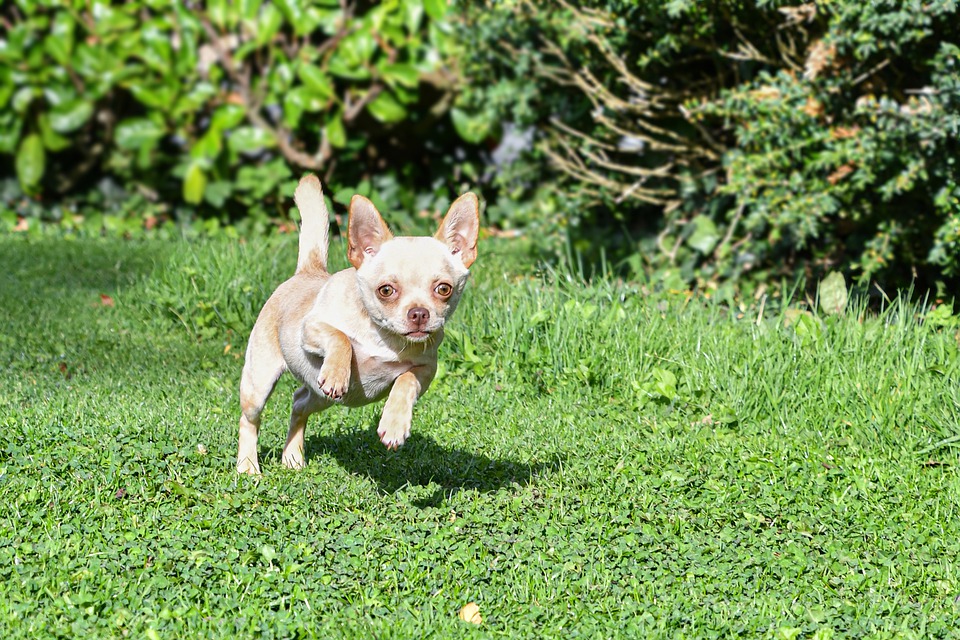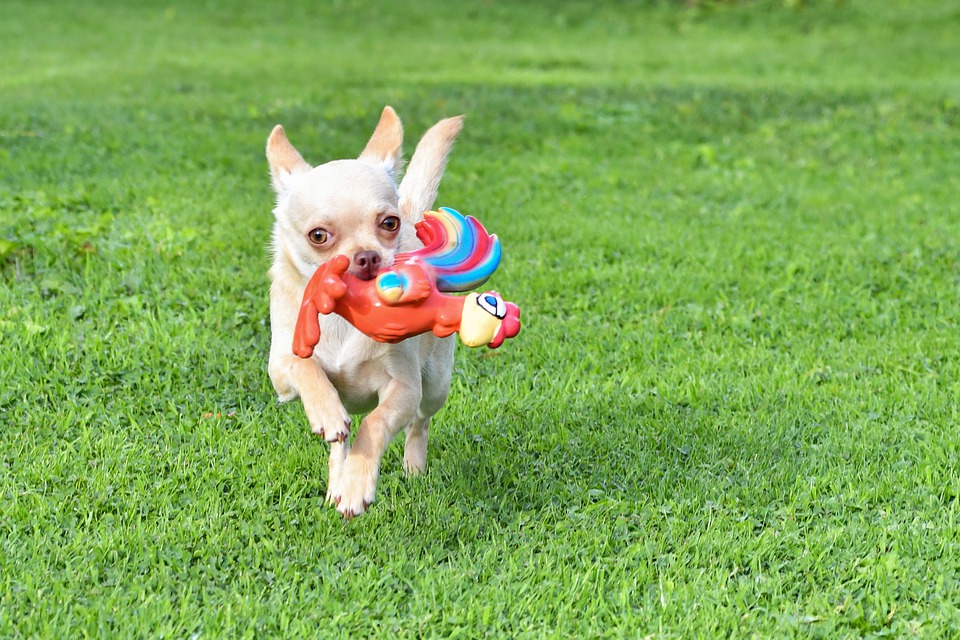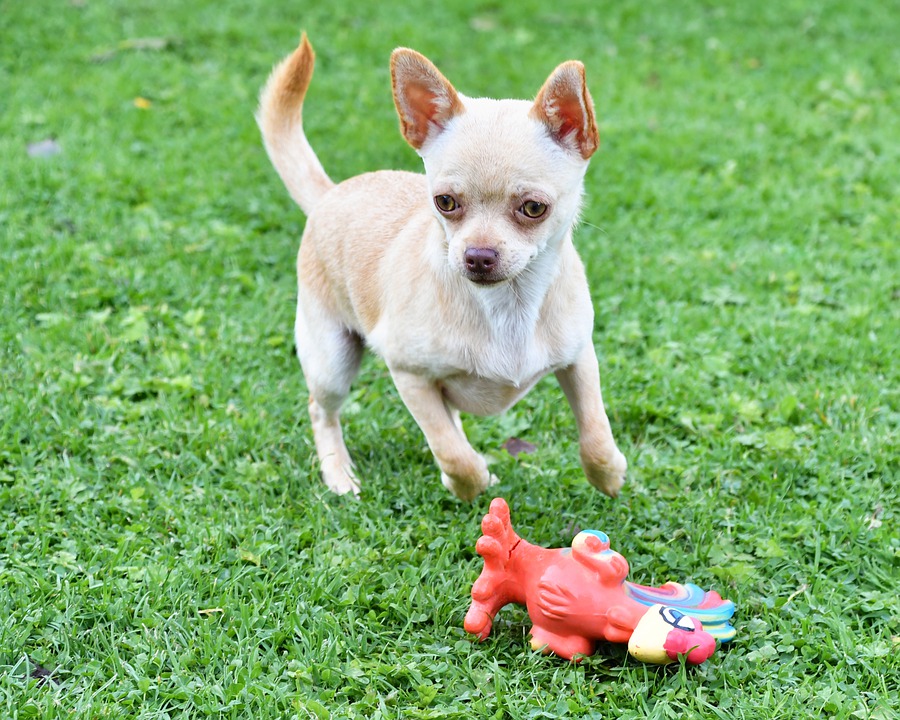Your Chihuahua may be fine while walking. No issues with its running, leaping, and playing. However, they begin to limp all of a sudden. Do you know what made them limp? It is essential to find out the reasons for your Chihuahua limping.
There are various reasons for limping in Chihuahuas. It could be due to an injury, a foreign body stuck in their paw or even arthritis. While some require immediate professional help, you can quickly fix other issues at home.
This article will discuss the common causes of limping in Chihuahuas and first-aid solutions for each.
Reasons Why Your Chihuahua is Limping

It may be worrying and heartbreaking when we detect anything isn’t right with our beloved Chihuahuas. So, if your pup has begun limping, it can be very tempting to panic and worry excessively.
First of all, it is essential to take a deep breath and relax. There may be a range of reasons for limping, some more serious than others, but the chances are that your pup will be absolutely fine.
Below are some of the most common reasons for limping in Chihuahuas:
🐕Leg injury
One of the most frequent reasons for limping is an injury. Your Chihuahua could have hurt its leg in a fall or a minor accident.
If you think that your Chihuahua has injured its leg, it is essential to take them to the vet as soon as possible for an examination. In some cases, your pup may require a splint or cast to help the leg heal properly.
🐕Nail problems
Another common reason for limping is a nail problem. Your Chihuahua may have a broken nail or one that is ingrown. Nails may grab and shred carpets, grass, and other surfaces. They may also snap when the dog is running or leaping.
The quick is something that your Chihuahua’s nails defend. There are several nerves and blood arteries in this area, which are also linked to the bone.
To relieve pressure on the injured nail bed, a dog with a broken nail would lick the afflicted paw and limp or hop on three legs. The quick is exposed if your Chihuahua’s nails are too short. It’s unpleasant enough to make you limp. It might be so painful that your dog refuses to put its foot down.
🐕Patellar Luxation or Luxating Patella
The clinical word for the kneecap dislocating from its proper location in the thigh bone groove is a luxating patella. If your canine has a Luxating Patella, you may detect that your Chihuahua “skips” on one or both of his rear legs. A dislocated kneecap usually causes the “swing” or “skip” in their stride, and the dog’s mobility will return to its original state as soon as the kneecap recovers.
A Chihuahua with a low-grade luxation may sometimes skip, take a few steps that aren’t “natural,” or hold up his rear leg. However, since luxation often worsens with usage (or age), the severity of the limp may develop with time.
Your veterinarian may propose a consultation with an orthopedic vet for surgery to repair the groove in the femur and prevent additional luxation. However, it depends on the severity of the luxation and the age of your Chihuahua.
But what does a luxated patella look like in your Chihuahua?
If the problem isn’t severe, you may notice a quick skip in your Chihuahua’s walking or sprinting. They will lift one of their rear legs and hop, walk, or sprint on three legs for a few feet.
They then put the leg back down and go about their business as if nothing had occurred. The kneecap slid out and then back in on its own.
The patella may not return on its own in more difficult situations. Your Chihuahua will not bring their leg down in this situation, so the veterinarian will have to relocate it. The patella is always out of position in the most challenging conditions. To fix this, a veterinarian will have to conduct surgery.
🐕Intervertebral Disc Disease (IVDD)
Intervertebral disc disease (IVDD) is a condition in which the discs that cushion the spine’s bones become damaged or begin to degenerate. These discs act as shock absorbers, and when they are damaged, they can place pressure on the spinal cord, causing pain and other problems.
There are two types of IVDD:
Type I (or “nonsurgical”): The disc does not rupture or herniate, but it does begin to degenerate
Type II (or “surgical”): The disc ruptures or herniates, placing pressure on the spinal cord
The most common symptom of IVDD is a sudden onset of rear leg weakness or paralysis. Your Chihuahua may also be reluctant to move, cry out in pain when touched, or have a hunched-over posture. If you notice any of these symptoms, it is important to immediately take your Chihuahua to the veterinarian.
🐕Spina Bifida
Spina bifida is a condition from birth in which the spine’s bones do not form properly around the spinal cord. It can cause the spinal cord to be exposed, leading to pain, weakness, and paralysis.
The most typical sign of spina bifida is a sudden onset of rear leg weakness or paralysis. Your Chihuahua may also be reluctant to move, cry out in pain when touched, or have a hunched-over posture. If you notice any of these symptoms, it is important to immediately take your Chihuahua to the veterinarian.
There is no effective therapy for dogs with spinal cord abnormalities as of the publication of this article. However, surgical treatment may be a possibility for dogs that are just minimally afflicted.
🐕Dislocated or broken bones
A dislocated bone is one that has been moved out of its normal position. A broken bone is a complete or partial break in the bone.
The most common symptom of a dislocated or broken bone is limping. Your Chihuahua may also yelp in pain, hold the limb up, or refuse to put weight on the affected limb. If you notice any of these symptoms, it is important to immediately take your Chihuahua to the veterinarian.
Treatment for a dislocated bone will vary depending on the severity of the injury. The bone can manually relocate back into its normal position in some cases. In other cases, surgery may be necessary to repair the damage.
Treatment for a broken bone will also vary depending on the severity of the injury. In some cases, the bone can be splinted or cast. In other cases, surgery may be necessary to repair the damage.
🐕Arthritis
Arthritis is a condition in which the joints become inflamed and stiff. It is a common condition in older Chihuahuas. Still, it can also occur in younger dogs due to an injury.
The most common symptom of arthritis is limping. Your Chihuahua may also be reluctant to move, cry out in pain when touched, or have a hunched-over posture. If you notice any of these symptoms, it is important to immediately take your Chihuahua to the veterinarian.
Treatment for arthritis will vary depending on the severity of the condition. In some cases, anti-inflammatory medication may be enough to control the pain and swelling. In other cases, surgery may be necessary to repair the damage.
🐕Legg Calve Perthes Disease
Legg Calve Perthes is an illness in which the supply of blood to the head of the femur (thigh bone) is interrupted. This interruption leads to the death of the bone tissue, which can cause pain and lameness.
The most common symptom of this disease is limping. Your Chihuahua may also be reluctant to move, cry out in pain when touched, or have a hunched-over posture. If you notice any of these symptoms, it is important to immediately take your Chihuahua to the veterinarian.
Treatment for the disease will vary depending on the severity of the condition. In some cases, surgery may be necessary to repair the damage. Medication may be enough to control the pain and swell in other cases.
When is Limping in Chihuahua an Emergency?

Limping isn’t frequently a life-threatening condition. A limping Chihuahua should be checked by a veterinarian as soon as possible, although not always. If your dog begins to limp, take a moment to examine the situation. Does your dog have the ability to stand or walk? Is there any bleeding or swelling going on? Do you need to provide any kind of first aid? What is the extent of your dog’s discomfort? Do you have any additional symptoms of illness?
In such cases, you should take your dog to the closest open veterinarian as soon as possible. You may need to visit an emergency veterinary facility if it occurs after business hours. Keep an eye out for the following signs:
- Too much swelling in one or more limbs
- Loss of the ability or unwillingness to get up or move
- Signs of shock, such as weakness, pale gums, and increased heart rate
- Excessive bleeding
- Uncontrollable pain
- Fever
- Obvious fracture
These are all signs that your Chihuahua needs emergency medical attention, and you should not delay seeking help.
What Should You Do If Your Chihuahua is Limping?

If your Chihuahua is limping, you should know the right steps to ensure that your dog receives the proper care.
💊Examine your Chihuahua for any obvious injuries.
Try to get a closer examination of the damaged leg if your Chihuahua will allow you. Is there a particular location on your dog that he licks? It may be the root of the issue. Look for cuts, bruising, swelling, heat, painful places, instability, and other odd indications on the foot and leg.
Look for a wound or a foreign item caught between the toes on the paw pad and between the toes. Make sure your toenails aren’t torn. Check for soreness or stiffness by gently manipulating the joints. You could feel or hear grinding in your joints, which might indicate arthritis.
💊Clean the minor wound
If you come across a small wound, clean it with warm water and soft soap (no alcohol or hydrogen peroxide). If you want to use an antibacterial ointment, bear in mind that your dog will lick it off. Make sure you follow the instructions on the package.
💊Minor swelling with no open wound
If there is some swelling but no obvious injury, you could try to reduce it by using an ice pack wrapped in a towel for fifteen minutes at a time. Do not put the ice directly on your dog’s skin, as this could cause frostbite.
If the limping persists for more than a day or two, make an appointment with your veterinarian.
Your veterinarian will give your Chihuahua a thorough examination and may order some tests, such as x-rays, to get to the root of the problem. Once the diagnosis is made, your veterinarian will develop a treatment plan that is best for your Chihuahua.
💊Use an Elizabethan collar.
If your dog doesn’t stop licking at a wound or an injury, you’ll need to put an Elizabethan collar on him. It will protect the injury while it heals.
💊Rest is the most effective way to recover.
There will be no visible evidence of limping in many situations. If your Chihuahua limps but not badly, try to keep him calm and comfortable. Do not take your Chihuahua for a walk or run; instead, encourage him to relax.
Allowing your Chihuahua to exercise or jump up is not a good idea. Avoid taking the stairs or carrying him up and down them. Take your dog out on a short leash just to do his business for potty breaks. Crate rest is the ideal strategy at all other times, particularly if you won’t be home for a portion of the day.
You might also limit your Chihuahua to a very tiny space. Make a comfy, low-to-the-ground bed for your pet. Bring your dog to the vet for an examination if the limping does not heal within 24-48 hours.
Veterinarian Treatment of Chihuahua Limping

Suppose your limping Chihuahua’s condition is considered serious enough to need immediate attention. In that case, the doctor will likely conduct a comprehensive medical evaluation, including a canine gait analysis. The veterinarian may observe your Chihuahua trotting, walking, getting up, and resting, depending on the severity of the injury. Blood and urine samples, as well as other diagnostic testing, may be necessary.
In more extreme circumstances, imaging procedures, including CT scans and X-rays, may be used by your veterinarian to attempt to determine the condition.
Veterinarians frequently use the lameness level to assess the severity of lameness. Chihuahuas with grade 4 or 5 lameness need immediate medical attention. It’s worth noting that sedation may be required for specific tests or to relieve mild discomfort so that the vet can perform a thorough examination.
There are a few different options for treating Chihuahua limping, depending on the underlying cause.
🩺Arthritis or sprain/strain
If your dog is limping due to arthritis, your veterinarian may prescribe pain medication or anti-inflammatory drugs. These will help to ease the pain and swelling associated with arthritis. In some cases, your veterinarian may also recommend supplements, such as glucosamine or chondroitin to help slow the progression of the disease.
If your dog is overweight, weight loss may also be the best thing to consider. Just a few extra pounds can put a lot of stress on your Chihuahua’s joints, so losing even a little weight can make a big difference.
If your dog has a sprain or strain, the treatment will focus on reducing the swelling and pain. Your veterinarian may prescribe medication and recommend rest and limited activity. The vet may also recommend physical therapy, such as hydrotherapy.
🩺Injury or fractures
If your Chihuahua is limping due to an injury, the treatment will depend on the severity of the injury. A minor injury, such as a sprain may require rest and pain medication. A more serious injury, such as a fracture, will require more extensive treatment.
Your veterinarian may recommend surgery to repair the fracture. In some cases, your Chihuahua may need to wear a cast or splint to immobilize the injured area while it heals. Your veterinarian will also likely recommend crate rest and limited activity.
Once the injury has healed, your veterinarian may recommend physical therapy to help your Chihuahua regain strength and mobility.
🩺Diseases
There are a few diseases that can cause limping in Chihuahuas. These include:
- Hip dysplasia: If your Chihuahua has hip dysplasia, treatment will focus on easing the pain and swelling. It may include weight loss, pain medication, supplements, and physical therapy. In some cases, surgery may be ideal.
- Legg Calve Perthes disease: It is a condition that affects the hip joint. Treatment involves pain relief, weight management, and surgery.
- Luxating patella: The kneecap may slip out of place, causing your Chihuahua to limp. Treatment focuses on reducing pain and inflammation. Your veterinarian may recommend physical therapy. In some cases, surgery may be necessary to correct the problem.
How to Prevent Chihuahua Limping?

You can do a few things to help prevent your Chihuahua from limping. These include:
What them closely when playing: Chihuahuas are little canines with a sensitive nature. Allowing them to leap from high places such as couches and beds can help them avoid damage. Also, keep an eye on them while playing with other dogs and intervene if they become too harsh.
Maintaining a healthy weight: Extra weight puts unnecessary stress on your Chihuahua’s joints, leading to arthritis or other joint problems.
Providing joint supplements: Supplements such as glucosamine and chondroitin can help slow the progression of arthritis.
Exercising regularly: Exercise helps keep your Chihuahua’s joints healthy and strong. Just be sure not to overdo it.
Trim your Chihuahua’s nails: Overgrown nails can put extra strain on your Chihuahua’s joints and lead to lameness.
Keeping up with vaccinations: Vaccinations help protect your Chihuahua from diseases, such as Lyme disease, that can cause limping.
Regular check-ups: Seeing your veterinarian regularly for check-ups can help catch problems early before they become serious.
By following these tips, you can help to prevent your Chihuahua from limping. If your dog does start to limp, be sure to take him to the veterinarian right away so
Frequently Asked Questions
Q: How can I tell if my Chihuahua has Luxating patella?
A: Symptoms of a luxating patella can include limping, reluctance to move, bunny hopping, and abnormal swelling or heat around the knee joint. Other signs that your Chihuahua may have luxating patella include difficulty standing or walking, skipping a step when walking, holding one leg up for an extended period, and reluctance to run or jump.
Q: Can a Chihuahua limp heal on its own?
Yes, a Chihuahua’s limp can heal on its own if the underlying cause is not something serious like a fracture or cancer. Depending on the reason for the limp, it may take some time, and there may be a few things you have to do to help it along. However, if the limp is due to arthritis, it is unlikely to get better without treatment. Treatment for a limping Chihuahua usually involves pain relief medication and physiotherapy.
Q: Can I give ibuprofen to my Chihuahua to treat his limping?
A: Ibuprofen is a pain reliever and anti-inflammatory medication safe for human use. However, it can be toxic to dogs and should not be given to them. Instead, you should take your Chihuahua to the veterinarian so that he can be examined and diagnosed properly. There may be an underlying medical condition causing the limping, and only a veterinarian will be able to diagnose and treat it.
Final Thoughts
Chihuahuas, like humans, may suffer from a variety of ailments that cause them to limp. The problem is that, unlike humans, our Chihuahuas cannot communicate what’s happening or how bad their condition is. It means it’s up to you, the caring pet parent, to find out what’s bothering your dog and what you can do to assist.
Limping is also one of the reasons you should take your Chihuahua to the veterinarian for a check-up. Your Chihuahua may limp for various reasons, some of which are serious and require treatment. In contrast, others are not as serious and will heal on their own. It is important to take your Chihuahua to the veterinarian so that he can be properly diagnosed and treated.
Here at ILoveChihuahua, we share our personal experiences as owners of this feisty breed. We talk about recommended methods, dog supplies picks, and advice on common Chihuahua problems. Our goal is to promote responsible dog ownership, so there would be fewer Chihuahuas in shelters.


